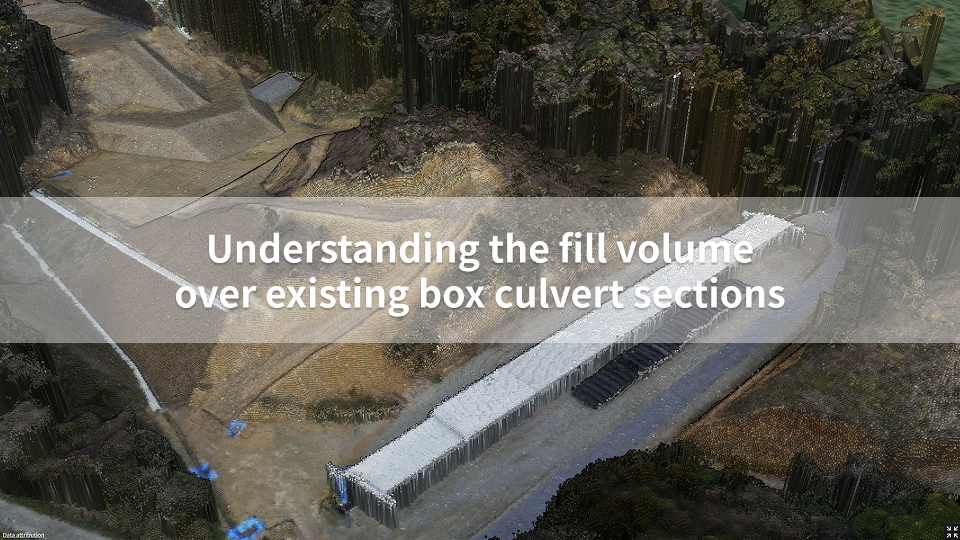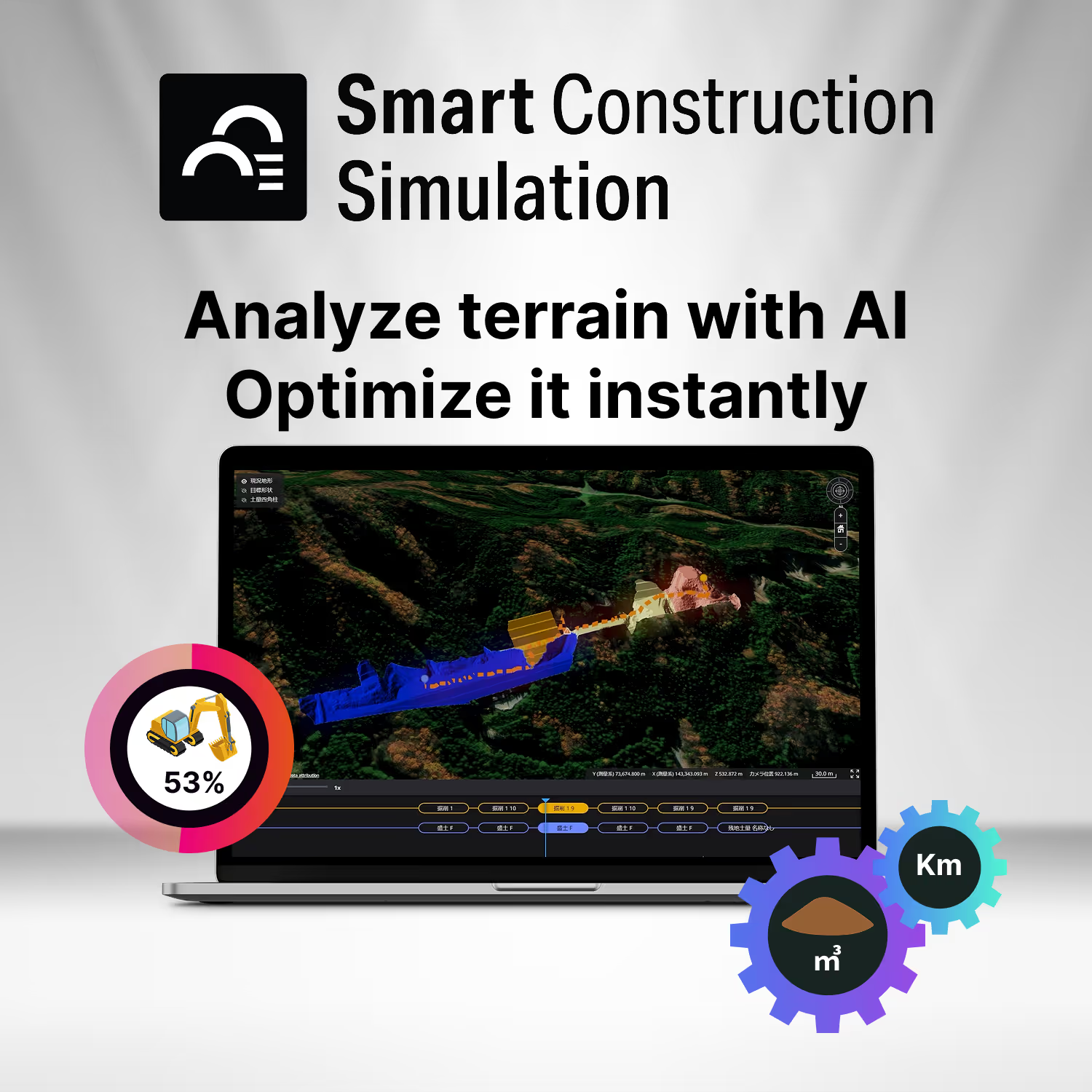
Change and Challenge ICT Construction Stage Ⅱ
Eliminating inefficiencies in construction through more precise planning enabled by digital technology


IMAI CORPORATION is a comprehensive construction company based in Shimane Prefecture, engaged in civil engineering, architectural construction, real estate, and recycling businesses. With a strong commitment to contributing to the local community, the company leverages the region’s rich natural resources to pursue a sustainable future. Through construction technologies, real estate development, and environmental preservation, IMAI CORPORATION continues to grow together with the local community.
Location
Shimane prefecture, Japan
Customer Type
General Contractor
Project Type
Road

Issues
IMAI CORPORATION, a general contractor based in Shimane Prefecture, upholds the management philosophy of “Contributing to the development of the local community through its business activities.” With a spirit of “Change and Challenge,” the company continues to pioneer the future of the regional construction industry without fear of transformation.
In large-scale civil engineering projects involving multiple contractors, regular progress meetings on soil distribution are held, where each company reports its progress based on the number of dump trucks used. However, this reporting method often leads to coordination issues—for example, a jobsite scheduled for soil transport may suddenly become unavailable, or a jobsite capable of receiving soil may no longer be able to do so. These disruptions frequently cause work stoppages due to poor coordination between jobsites.
Recognizing the limitations of this approach, IMAI CORPORATION saw the urgent need for more accurate data sharing and progress management. To address this, the company implemented measures to enhance productivity by promoting seamless coordination—not only within its own work zone but also across multiple work zones—through precise and transparent information sharing.

Solutions
IMAI CORPORATION has been an early adopter of ICT construction machinery, implementing ICT construction since 2015. In 2018, the company has adopted Smart Construction, implementing high-precision data acquisition at job sites (3D digitization of jobsite using Smart Construction Edge), ICT conversion of conventional machines via Smart Construction 3D Machine Guidance, and dump truck operation management with Smart Construction Fleet. They have also realized data sharing and integrated management using Smart Construction Dashboard, a 3D data visualization tool. To support this, they established a "Technology Promotion Office" focused on internal deployment and support for these new technologies.
For this project, IMAI CORPORATION based its operations on the data utilization and integrated management it has been developing, and challenged itself to further improve productivity through construction planning and budget control aligned with the Ministry of Land, Infrastructure, Transport and Tourism’s ICT Construction Stage II. The project included 100,000 m³ of excavation, 90,000 m³ of fill, and 10,000 m³ of off-jobsite soil removal for road improvement work.
Because soil transportation could not be completed within the jobsite area, accurate soil volume management was essential to coordinate with other jobsites and adjust the construction plan accordingly.
At this jobsite, 10 items are being implemented as part of ICT Construction Stage II. This article will focus on the following: ICT Construction Stage II: Progress-based adjustment of equipment and materials during excavation and fill phases、soil distribution management across multiple jobsites based on progress management in excavation and fill operations、refinement of construction planning through schedule development based on data.
・Step 1:Verifying the feasibility of the initial plan through simulation analysis

To verify the validity of the initial plan, a simulation was conducted and the plan was revised into a more realistic optimized plan with sufficient schedule buffer. As a result, the transportation period was shortened by one month, and additional flexibility was secured for the subsequent processes—Also allowing for a day off in the weekend. This refers to「Refining the construction plan through data-driven process planning」under reference Item I of ICT Construction Stage II.
・Step 2:Plan optimization driven by dump truck driving history

Next, driving history data will be utilized to further optimize the construction plan. Since simulation results are only reference values, collecting real-world data and reconfiguring the simulation based on those values enables the creation of a more accurate construction plan. This refers to「Refining the construction plan through data-driven process planning」under reference Item I of ICT Construction Stage II.
・Step 3:Soil allocation management through accurate volume estimation and optimized construction planning

Regular progress meetings are held with the client, partner companies, and the jobsite supervisor at the disposal jobsite. During these meetings, the actual soil volume progress and simulation results are reviewed together to adjust the number of dump trucks for replanning. By sharing accurate information, unnecessary work and inefficiencies can be reduced, enabling the development of a more efficient work plan. As a result, the company was able to reduce labor by the equivalent of 68 truck-days and cut construction costs by approximately 5.1 million yen compared to original plan.(Approximately 17.5% reduction) This refers to「Refining the construction plan through data-driven process planning」under reference Item I、「Progress-based adjustment of equipment and materials during excavation and fill phases」、「Soil distribution management across multiple jobsites based on progress management in excavation and fill operations」
・Understanding the fill volume over existing box culverts

In this project, the fill work for the box culvert was a critical task that influenced the overall project schedule. Traditionally, it required creating drawings and calculating soil volumes before discussing the transport routes. However, by utilizing simulation, soil volumes and shapes could be quickly understood, eliminating the need to create drawings each time. As a result, the workload was reduced by approximately 90% compared to the conventional method.
・Utilizing 3D Terrain Data for Typhoon Disaster Prevention

By capturing up-to-date 3D terrain data on-jobsite, it becomes possible to visualize expected water flow based on forecasted rainfall prior to a typhoon. There was a risk that slope failures or sediment runoff caused by rainfall could block dump truck routes. However, by identifying water collection points in advance, appropriate countermeasures were taken. As a result, potential bottlenecks such as slope collapses and sediment runoff were prevented, ensuring both worker safety and unobstructed dump truck access after the rainfall.
Since 2015, IMAI CORPORATION has been utilizing ICT construction machinery, and in 2018, the company introduced「Smart Construction」. In a road improvement project, they challenged ICT Construction Stage II, achieving significant schedule reductions and flexible plan revisions through the use of high-precision data.
















